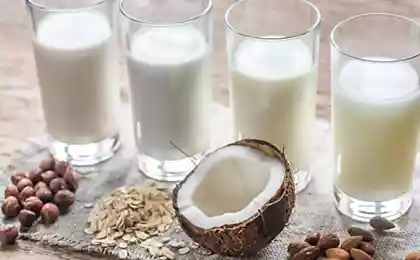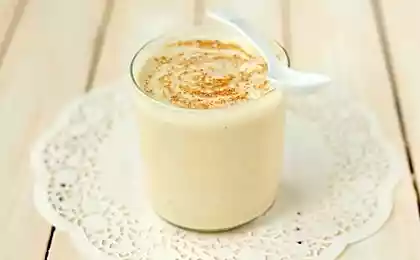264
Why My Husband Recollects Dairy Kissing Kitchen as the Worst Thing That Happened to Him as a Child
The fact that in Soviet canteens cooked milk jelly, I learned recently. My husband Sasha told me about it. That day he came home from work angry and hungry. “You would have cooked me milk jelly!” – Alexander indignant, when I offered him barley porridge for dinner. The dish was cooked according to all the rules, with butter and meat gravy, however, my faithful began to turn his nose. “Eat it!” I commanded and put a full plate in front of him. He grumbled and began appetizing both cheeks.

And I didn't have milk jelly coming out of my head. “Does that happen?” she asked her husband seriously. “I don’t know, but in my kindergarten there was jelly on milk!” smiled the finicky husband, and I was jerked when I imagined what it could look like. I believed him, although I heard about such a drink for the first time in my life: my mother had never cooked such a thing, and the kindergarten in our village was opened much later. But my beloved went through all the stages of Soviet education and catering. He kept a lot of unforgettable impressions about kindergarten and often shares his memories.

I’ll start with the menu, perhaps. In the kindergarten, children were then given cocoa, compote, tea and jelly, which was sometimes cooked with milk. Sasha's milk jelly was rejected immediately, although the other guys drank it quite willingly. Following the white drink in the black list were its fruit species. All the guys drank with pleasure, and with cocoa some had to shoot film.
Among the porridges, the most common was manna. This cereal was cheap, so it was cooked most often. And every time there were lumps in it. The children refused to eat it, and the nurse walked between the rows and forced them to take a spoon in their hands. If I had not tried the “official” semolina in school, I would also not understand why my husband did not even want to try it in kindergarten, because my mother cooked semolina very tasty and without insidious clots.
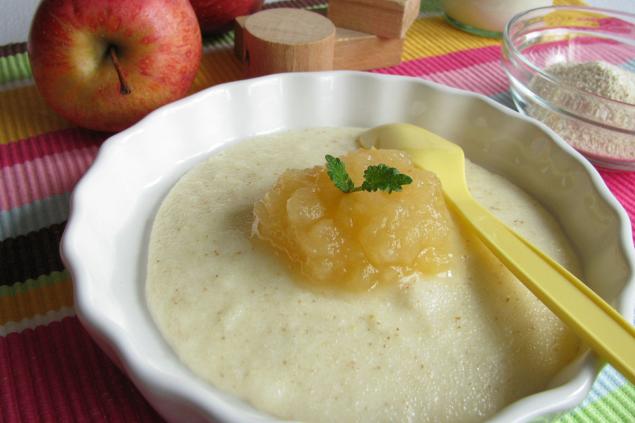
My older sister and I ate it from the same plate. Since my sister is a sweet tooth and likes to sweeten everything, half the contents in the bowl were generously sprinkled with sugar. Then each of us drew porridge from “our” side. Now I understand that it was easier to take two separate plates, but then no one thought about it. We had fun, which is the main thing.
The taste of oatmeal young children did not like, and Sashenka also did not like their appearance. Don't even show him the oatmeal now! If there was rice porridge for breakfast, the children did not have to beg for a long time: they emptied the plates voluntarily. At an early age, the husband remained indifferent to pearl porridge, although during service in the army he was able to appreciate barley. As it turns out, everything is known by comparison.

In kindergarten, milk soup was regularly prepared - an invention of Soviet chefs who tried to diversify the meager menu. Crumbs ate it with pleasure, although, probably, no other country cooked pasta in milk. This dish was also found in working dining rooms. I wonder who ate it there.
Karapuzov was necessarily fed liquid: soup, borscht or brine. They tasted red borscht. Sasha still loves it more than any soup. Saline is food for an amateur, not everyone in the group wanted to eat it, and they managed to try it already in high school.
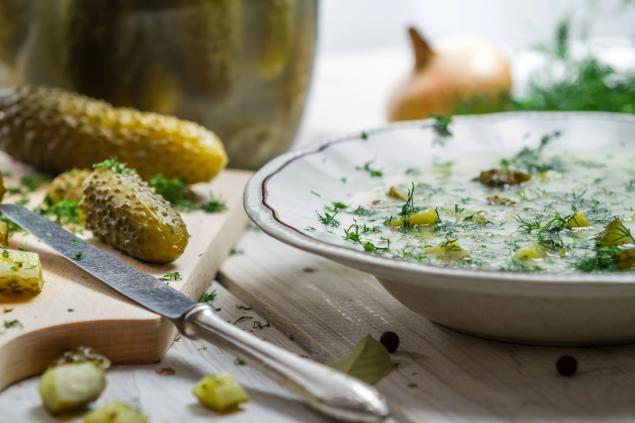
On the second as a side dish, children were offered pasta, cereal or vegetables. They relied on meat or fish cutlets with gravy, which alternated with the well-known goulash. Today, in the menu of the kindergarten dining room you can see a variety of dishes from potatoes, and previously limited to simple puree, which was often too watery.
Most of all, children liked afternoon snacks, because they were often treated to cheesecakes, cottage cheese casserole, pancakes and pancakes. It was all served with jam or seed. Alexander’s love for such delicacies has not faded even now.
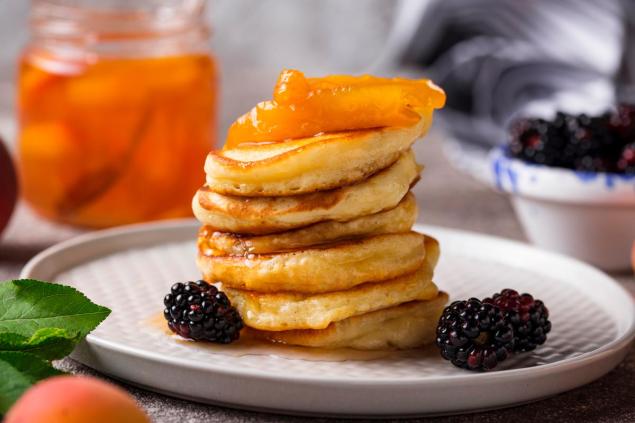
How tasty the children were fed in kindergarten depended on the control of the head and the skill of the cooks. When each of them performed their duties faithfully, the children were fed and satisfied. But they weren't always lucky. Since then, my husband hates any kind of jelly, sticky cereals in porridge, low-grade pasta, and also hates all dishes that include semolina cereal. Here, of course, you can argue, because he liked the cheese casserole at the time. He's still enjoying her now. Do you think you should tell your husband what ingredients it comes from?

And I didn't have milk jelly coming out of my head. “Does that happen?” she asked her husband seriously. “I don’t know, but in my kindergarten there was jelly on milk!” smiled the finicky husband, and I was jerked when I imagined what it could look like. I believed him, although I heard about such a drink for the first time in my life: my mother had never cooked such a thing, and the kindergarten in our village was opened much later. But my beloved went through all the stages of Soviet education and catering. He kept a lot of unforgettable impressions about kindergarten and often shares his memories.

I’ll start with the menu, perhaps. In the kindergarten, children were then given cocoa, compote, tea and jelly, which was sometimes cooked with milk. Sasha's milk jelly was rejected immediately, although the other guys drank it quite willingly. Following the white drink in the black list were its fruit species. All the guys drank with pleasure, and with cocoa some had to shoot film.
Among the porridges, the most common was manna. This cereal was cheap, so it was cooked most often. And every time there were lumps in it. The children refused to eat it, and the nurse walked between the rows and forced them to take a spoon in their hands. If I had not tried the “official” semolina in school, I would also not understand why my husband did not even want to try it in kindergarten, because my mother cooked semolina very tasty and without insidious clots.

My older sister and I ate it from the same plate. Since my sister is a sweet tooth and likes to sweeten everything, half the contents in the bowl were generously sprinkled with sugar. Then each of us drew porridge from “our” side. Now I understand that it was easier to take two separate plates, but then no one thought about it. We had fun, which is the main thing.
The taste of oatmeal young children did not like, and Sashenka also did not like their appearance. Don't even show him the oatmeal now! If there was rice porridge for breakfast, the children did not have to beg for a long time: they emptied the plates voluntarily. At an early age, the husband remained indifferent to pearl porridge, although during service in the army he was able to appreciate barley. As it turns out, everything is known by comparison.

In kindergarten, milk soup was regularly prepared - an invention of Soviet chefs who tried to diversify the meager menu. Crumbs ate it with pleasure, although, probably, no other country cooked pasta in milk. This dish was also found in working dining rooms. I wonder who ate it there.
Karapuzov was necessarily fed liquid: soup, borscht or brine. They tasted red borscht. Sasha still loves it more than any soup. Saline is food for an amateur, not everyone in the group wanted to eat it, and they managed to try it already in high school.

On the second as a side dish, children were offered pasta, cereal or vegetables. They relied on meat or fish cutlets with gravy, which alternated with the well-known goulash. Today, in the menu of the kindergarten dining room you can see a variety of dishes from potatoes, and previously limited to simple puree, which was often too watery.
Most of all, children liked afternoon snacks, because they were often treated to cheesecakes, cottage cheese casserole, pancakes and pancakes. It was all served with jam or seed. Alexander’s love for such delicacies has not faded even now.

How tasty the children were fed in kindergarten depended on the control of the head and the skill of the cooks. When each of them performed their duties faithfully, the children were fed and satisfied. But they weren't always lucky. Since then, my husband hates any kind of jelly, sticky cereals in porridge, low-grade pasta, and also hates all dishes that include semolina cereal. Here, of course, you can argue, because he liked the cheese casserole at the time. He's still enjoying her now. Do you think you should tell your husband what ingredients it comes from?
Why many people still remember Soviet canteens, did they eat so tasty there?
To find out your personal prediction for April, choose one of the stones.
